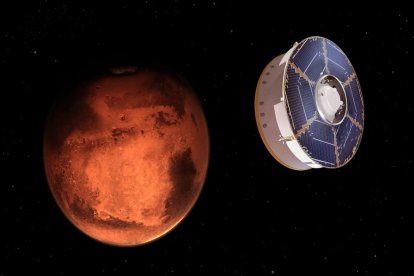A meteorite triggered a megatsunami on Mars 3.4 billion years ago
According to a scientific study, the impact was similar to the one that caused the extinction of the dinosaurs on Earth.

Marte / NASA
Billions of years ago, a meteorite similar to the one that caused the extinction of the dinosaurs on Earth fell on the sea surface of Chryse Planitia in the northern hemisphere of Mars. This impact generated a megatsunami and left its mark on the surface of the Red Planet.
According to an article published in Scientific Reports, a group of researchers coordinated by the Planetary Science Institute in Tucson, Ariz. combined several images to detect a crater that they named Pohl. They also determined that Pohl is located about 393 feet below sea level, has a diameter of about 70 miles across and, according to studies, formed about 3.4 billion years ago.
Two possible explanations
The research group performed meteorite impact simulations to find out what type of collision was generated when Pohl was created. Thanks to these tests, they came up with two possible explanations for what was surely a catastrophic result.
The first explanation involves the impact of a meteorite at least 5.5 miles in diameter, which would have released the energy of 13 million megatons of TNT explosives. In the second, the meteorite was about 2 miles in diameter, but the ground resistance would have been lower. The simulation of this result indicates that half a megaton of energy would have been released.
With both simulations, they were able to create a crater of similar dimensions to Pohl. Either impact would have generated a megatsunami stretching more than 900 miles from the epicenter of the impact, with its waves potentially reaching 800 feet in height.












